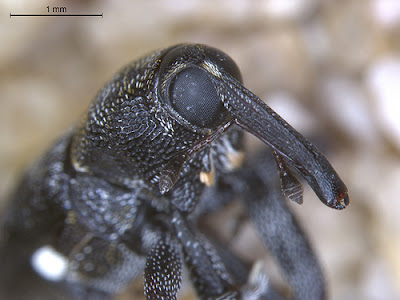Unidentified Irenimus species.
Well... six months ago I started my PhD. It's been a busy few months, writing my proposal, visiting to insect collections around the country, and going to Arizona to attend a workshop on weevil taxonomy. Happily, everything seems to be going to plan. I feel that I'm starting to have an idea as to what morphological characters I should be looking at in order to differentiate between species. I've got a feel for what the valid, previously described species look like. And I'm close to having most of my techniques sorted.
What will the next six months look like? I'll be doing field work over the next few months, focusing on the type localities of the previously described species. This will result in a large number of specimens which I'll be able to look at morphologically, as well as providing material for DNA sequencing. Work on both these aspects will hopefully continue progressing as well as they've begun, with the common species (at least) well characterised by the end of the year. I will have to start on an identification key to the species of Irenimus, though it will only be a rough draft at this stage of the game. I may also have a student help me with some behavioural/biological research that is related but secondary to the core questions of my PhD.
I won't need to be bored!
Read:
McCulloch D. 2010. A History of Christianity: The First Three Thousand Years London: Penguin
Psalms 105–107 Websites:
David Winter—Code for Evolutionary Biology
OpenOffice community forum—File locked for editing
VII Southern Connection Congress
New Zealand Herald—Yachting: Only four challengers enter America's Cup Watched:
America's Cup World Series—San Fransisco 23–26 August 2012




